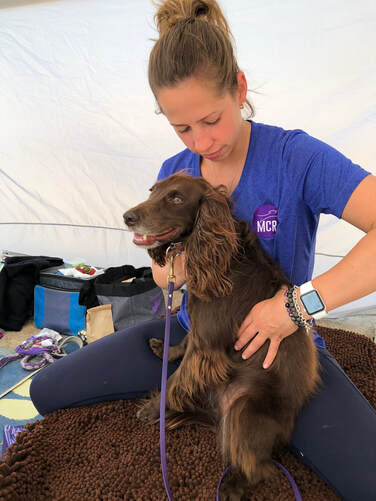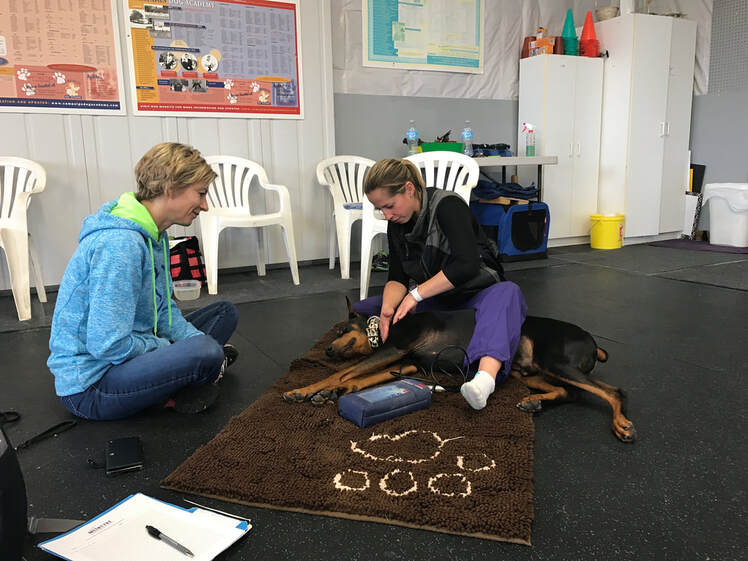|
What if I told you there was a complex system in your dog's body that can greatly affect their posture, mobility, emotional well-being, and performance? The fascia is quite simply the tissue that holds you together! Injury and pain to one part of the fascia can have profound effects on the rest of the body. Knowing the role the fascia plays in the body, how it can be injured, and recognizing fascia pain is crucial for any dog owner looking to prevent injury or improving their dog's performance. What is the Fascia?The fascia is a web of connective tissue underneath the skin formed in bands that wrap around all the internal parts of the body - the muscles, organs, nerves, bones, and blood vessels from head to toe. It is the informational and structural highway of the body that allows the muscles to move freely alongside other structures and reduces friction. Together, muscle and fascia make up what is called the myofascia system. Think of the fascia as the spiderweb of the body. Touch one part of the web and the entire web moves and provides information. Similarly, the fascia is “the organ of posture” and the entire body is connected through the fascia system. Fascia can become restricted anywhere in the body and is not dictated by anatomy. The fascia is also loaded with mechanoreceptors that provide the body with both proprioception and pain nerve fibers. Second to the nervous system the myofascia system is potentially the most important system of communication for the body. How can an Injury occur?Healthy fascia is smooth, slippery and flexible. Factors that cause fascia to become hot, immobile, painful and hard include:
When a body has been injured, the fascia will tighten, stiffen and even turn into scar tissue in its effort to bring stability to the body. As the fascia ‘thickens’ with scar tissue the normal “slide and glide” of tissue is disrupted. This disruption of normal muscle movement can lead to other, chronic conditions, such as degenerative arthritis and pain. As the muscles lose their ability to slide naturally the body experiences increased tension which causes dysfunction and ‘mis-fires” of the mechanoreceptors and in turn causes dysfunction and “mis-fires” of pain receptors. What does Myofascia pain look like?Myofascia pain can occur anywhere in the body. Injury to the fascia can cause pain, stiffness, and reduced mobility and can mimic the symptoms of other degenerative diseases like arthritis. Signs of Myofascial pain include
How to Improve Fascia HealthThere are a number of things you can do to help keep fascia heathy.
When your dog is experiencing fascia pain remember that the body will compensate in other areas so regular assessments by a canine PT can help with early identification of problems relating to the fascia. If you think your dog may be experiencing fascia pain or is compensating in some way I'm always happy to help.
5 Comments
Lynn Coombes
2/16/2021 12:38:13 am
Hi
Reply
Georgi
7/6/2021 02:08:33 pm
Hello!
Reply
4/29/2022 11:34:40 pm
This is an amazing article, thank you for sharing. Keep up the good work.
Reply
6/15/2022 03:51:55 am
Great Article. Loved it.. Almost explained everything ..very comprehensive.. Thank you for sharing this.. Keep it up
Reply
Leave a Reply. |
AuthorCarolyn McIntyre Archives
March 2024
Categories
All
|



 RSS Feed
RSS Feed